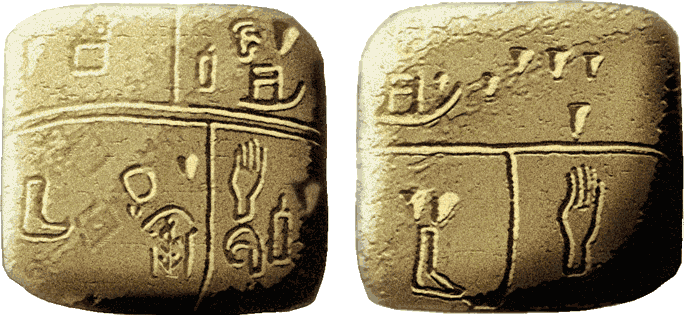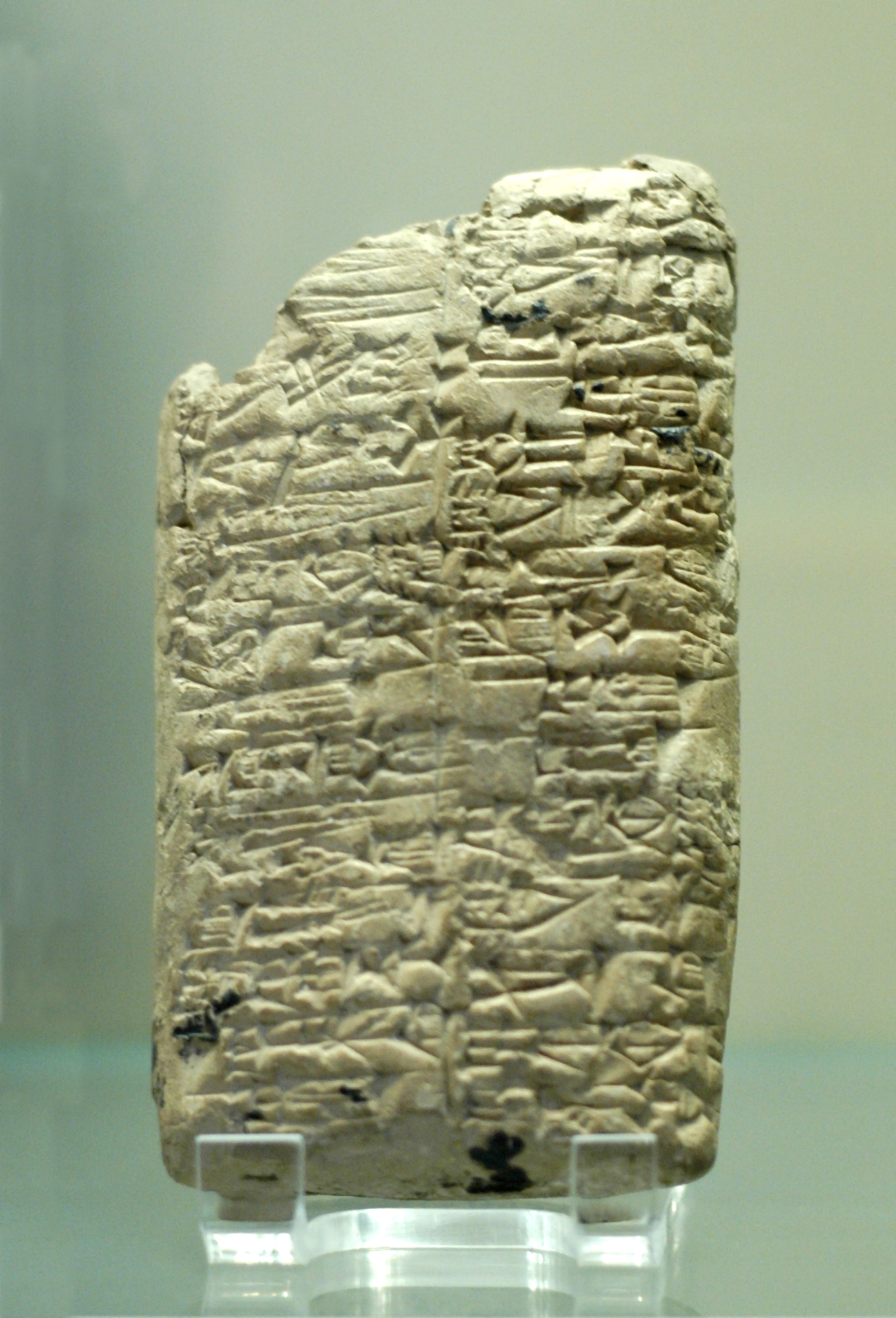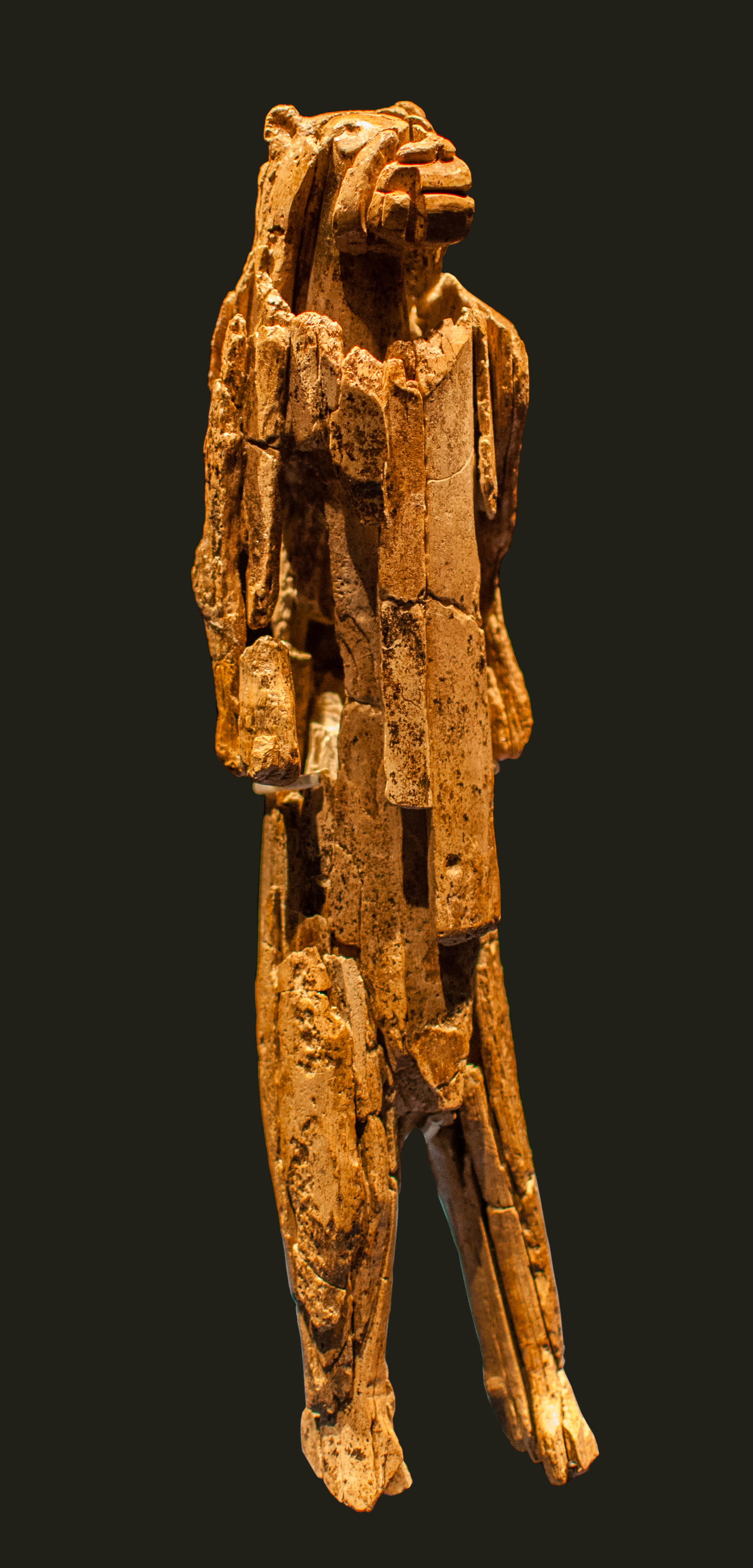|
Proto-writing
Proto-writing consists of visible marks communication, communicating limited information. Such systems emerged from earlier traditions of symbol systems in the early Neolithic, as early as the 7th millennium BC in History of China, China and History of the Balkans, southeastern Europe. They used ideographic or early mnemonic symbols or both to represent a limited number of concepts, in contrast to true writing systems, which record the language of the writer. Paleolithic Analysis in 2022, led by Bennet Bacon, an amateur archaeologist, showed that lines, dots and "Y"-like symbols on Upper Palaeolithic cave paintings were used to indicate the mating cycle of animals in a lunar calendar. The markings found in over 400 caves across Europe were compared to the mating cycles of the animals with which they were associated, showing a correlation with the month of the year in which the animals depicted in the cave paintings would typically give birth. The markings were 20,000 year ... [...More Info...] [...Related Items...] OR: [Wikipedia] [Google] [Baidu] |
Vinča Symbols
The Vinča symbols are a set of undeciphered symbols found on artifacts from the Neolithic Vinča culture and other "Old Europe (archaeology), Old European" cultures of Central Europe, Central and Southeast Europe. They have sometimes been described as an example of proto-writing. The symbols went out of use around 3500 BC. Many scholars agree that the "writing" itself is not based on any language whatsoever and it is mostly symbolic. Discovery In 1875, archaeological excavations directed by the Hungarian archaeologist Baroness Zsófia Torma (1840–1899) at Tordos (present Turdaș, Romania) unearthed marble and fragments of pottery inscribed with previously unknown symbols. At the site, on the Mureș (river), Maros river, a feeder into a tributary of the Danube, female figurines, pots, and artifacts made of stone were also found. In 1908, a similar cache was found during excavations directed by Serbian archaeologist Miloje Vasić (1869–1956) in Vinča, a suburb of Belgr ... [...More Info...] [...Related Items...] OR: [Wikipedia] [Google] [Baidu] |
Cuneiform
Cuneiform is a Logogram, logo-Syllabary, syllabic writing system that was used to write several languages of the Ancient Near East. The script was in active use from the early Bronze Age until the beginning of the Common Era. Cuneiform scripts are marked by and named for the characteristic wedge-shaped impressions (Latin: ) which form their Grapheme, signs. Cuneiform is the History of writing#Inventions of writing, earliest known writing system and was originally developed to write the Sumerian language of southern Mesopotamia (modern Iraq). Over the course of its history, cuneiform was adapted to write a number of languages in addition to Sumerian. Akkadian language, Akkadian texts are attested from the 24th century BC onward and make up the bulk of the cuneiform record. Akkadian cuneiform was itself adapted to write the Hittite language in the early second millennium BC. The other languages with significant cuneiform Text corpus, corpora are Eblaite language, Eblaite, Elamit ... [...More Info...] [...Related Items...] OR: [Wikipedia] [Google] [Baidu] |
Symbol
A symbol is a mark, Sign (semiotics), sign, or word that indicates, signifies, or is understood as representing an idea, physical object, object, or wikt:relationship, relationship. Symbols allow people to go beyond what is known or seen by creating linkages between otherwise different concepts and experiences. All communication is achieved through the use of symbols: for example, a red octagon is a common symbol for "Stop sign, STOP"; on maps, blue lines often represent rivers; and a red rose often symbolizes love and compassion. Numerical digit, Numerals are symbols for numbers; Letter (alphabet), letters of an alphabet may be symbols for certain phonemes; and personal names are symbols representing individuals. The academic study of symbols is called semiotics. In the arts, Artistic symbol, symbolism is the use of a abstract and concrete, concrete element to represent a more abstract idea. In cartography, an organized collection of symbols forms a map layout, legend for a ma ... [...More Info...] [...Related Items...] OR: [Wikipedia] [Google] [Baidu] |
Pictographic
A pictogram (also pictogramme, pictograph, or simply picto) is a graphical symbol that conveys meaning through its visual resemblance to a physical object. Pictograms are used in systems of writing and visual communication. A pictography is a writing system which uses pictograms. Some pictograms, such as hazard pictograms, may be elements of formal languages. In the field of prehistoric art, the term "pictograph" has a different definition, and specifically refers to art painted on rock surfaces. Pictographs are contrasted with petroglyphs, which are carved or incised. Small pictograms displayed on a computer screen in order to help the user navigate are called ''icons''. Historical Early written symbols were based on pictograms (pictures which resemble what they signify) and ideograms (symbols which represent ideas). Ancient Sumerian, Egyptian, and Chinese civilizations began to adapt such symbols to represent concepts, developing them into logographic writing systems. Pictogr ... [...More Info...] [...Related Items...] OR: [Wikipedia] [Google] [Baidu] |
Communication
Communication is commonly defined as the transmission of information. Its precise definition is disputed and there are disagreements about whether Intention, unintentional or failed transmissions are included and whether communication not only transmits semantics, meaning but also creates it. Models of communication are simplified overviews of its main components and their interactions. Many models include the idea that a source uses a code, coding system to express information in the form of a message. The message is sent through a Communication channel, channel to a receiver who has to decode it to understand it. The main field of inquiry investigating communication is called communication studies. A common way to classify communication is by whether information is exchanged between humans, members of other species, or non-living entities such as computers. For human communication, a central contrast is between Verbal communication, verbal and non-verbal communication. Verba ... [...More Info...] [...Related Items...] OR: [Wikipedia] [Google] [Baidu] |
Clay Tablet
In the Ancient Near East, clay tablets (Akkadian language, Akkadian ) were used as a writing medium, especially for writing in cuneiform, throughout the Bronze Age and well into the Iron Age. Cuneiform characters were imprinted on a wet clay tablet with a stylus often made of Reed (plant), reed (reed pen). Once written upon, many tablets were dried in the sun or air, remaining fragile. Later, these unfired clay tablets could be soaked in water and recycled into new clean tablets. Other tablets, once written, were either deliberately fired in hot kilns, or inadvertently fired when buildings were burnt down by accident or during conflict, making them hard and durable. Collections of these clay documents made up the first archives. They were at the root of the first library, libraries. Tens of thousands of written tablets, including many fragments, have been found in the Middle East. Most of the documents on tablets that survive from the Minoan civilization, Minoan and Mycenaean ... [...More Info...] [...Related Items...] OR: [Wikipedia] [Google] [Baidu] |
Jiahu Symbols
The Jiahu symbols () comprise a corpus of markings on prehistoric artifacts found in Jiahu, a Neolithic site of Peiligang culture in Henan, China. The Jiahu symbols are dated to around 6000 BC. The site was excavated in 1989. Although at first a total of 17 groups of symbols were identified, intensive scrutiny has found there to be only 11 definitely incised signs, of which 9 were incised on tortoise shells and an additional 2 on bone. The archaeologists who made the original finds believed the markings to be similar in form to some characters used in the much later oracle bone script (e.g. similar markings of "eye", "sun; day"), but most doubt that the markings represent systematic writing. A 2003 report in '' Antiquity'' interpreted them "not as writing itself, but as features of a lengthy period of sign-use which led eventually to a fully-fledged system of writing". The earliest known body of writing in the oracle bone script dates much later to the reign of the lat ... [...More Info...] [...Related Items...] OR: [Wikipedia] [Google] [Baidu] |
Writing Systems
A writing system comprises a set of symbols, called a ''script'', as well as the rules by which the script represents a particular language. The earliest writing appeared during the late 4th millennium BC. Throughout history, each independently invented writing system gradually emerged from a system of proto-writing, where a small number of ideographs were used in a manner incapable of fully encoding language, and thus lacking the ability to express a broad range of ideas. Writing systems are generally classified according to how its symbols, called '' graphemes'', relate to units of language. Phonetic writing systemswhich include alphabets and syllabariesuse graphemes that correspond to sounds in the corresponding spoken language. Alphabets use graphemes called '' letters'' that generally correspond to spoken phonemes. They are typically divided into three sub-types: ''Pure alphabets'' use letters to represent both consonant and vowel sounds, ''abjads'' generally only u ... [...More Info...] [...Related Items...] OR: [Wikipedia] [Google] [Baidu] |
Tărtăria Tablets
The Tărtăria tablets () are three tablets, reportedly discovered in 1961 at a Neolithic site in the village of Tărtăria in Săliștea commune (about from Alba Iulia), from Transylvania. The tablets bear incised symbols associated with the corpus of the Vinča symbols and have been the subject of considerable controversy among archaeologists, some of whom have argued that the symbols represent the earliest known form of writing in the world. Accurately dating the tablets is difficult as the stratigraphy pertaining to their discovery is disputed, and a heat treatment performed after their discovery has prevented the possibility of directly radiocarbon dating the tablets. Based on the account of their discovery which associates the tablets with the Vinča culture and on indirect radiocarbon evidence, some scientists propose that the tablets date to around , predating Mesopotamian pictographic proto-writing. Some scholars have disputed the authenticity of the account of thei ... [...More Info...] [...Related Items...] OR: [Wikipedia] [Google] [Baidu] |
Upper Palaeolithic
The Upper Paleolithic (or Upper Palaeolithic) is the third and last subdivision of the Paleolithic or Old Stone Age. Very broadly, it dates to between 50,000 and 12,000 years ago (the beginning of the Holocene), according to some theories coinciding with the appearance of behavioral modernity in early modern humans. It is followed by the Mesolithic. Anatomically modern humans (i.e. ''Homo sapiens'') are believed to have emerged in Africa around 300,000 years ago. It has been argued by some that their ways of life changed relatively little from that of archaic humans of the Middle Paleolithic, until about 50,000 years ago, when there was a marked increase in the diversity of artefacts found associated with modern human remains. This period coincides with the most common date assigned to expansion of modern humans from Africa throughout Asia and Eurasia, which may have contributed to the extinction of the Neanderthals. The Upper Paleolithic has the earliest known evide ... [...More Info...] [...Related Items...] OR: [Wikipedia] [Google] [Baidu] |
Vinča Culture
The Vinča culture , also known as Turdaș culture, Turdaș–Vinča culture or Vinča-Turdaș culture, is a Neolithic archaeological culture of Southeast Europe, dated to the period 5400–4500 BC. It is named for its type site, Vinča-Belo Brdo, a large tell settlement discovered by Serbian archaeologist Miloje Vasić in 1908. As with other cultures, it is mainly distinguished by its settlement pattern and ritual behaviour. It was particularly noted for its distinctive dark-burnished pottery. Farming technology first introduced to the region during the First Temperate Neolithic was developed further by the Vinča culture. This fuelled a population boom that produced some of the largest settlements in prehistoric Europe. These settlements maintained a high degree of cultural uniformity through the long-distance exchange of ritual items, but were probably not politically unified. Various styles of zoomorphic and anthropomorphic figurines were hallmarks of the culture, as ... [...More Info...] [...Related Items...] OR: [Wikipedia] [Google] [Baidu] |






